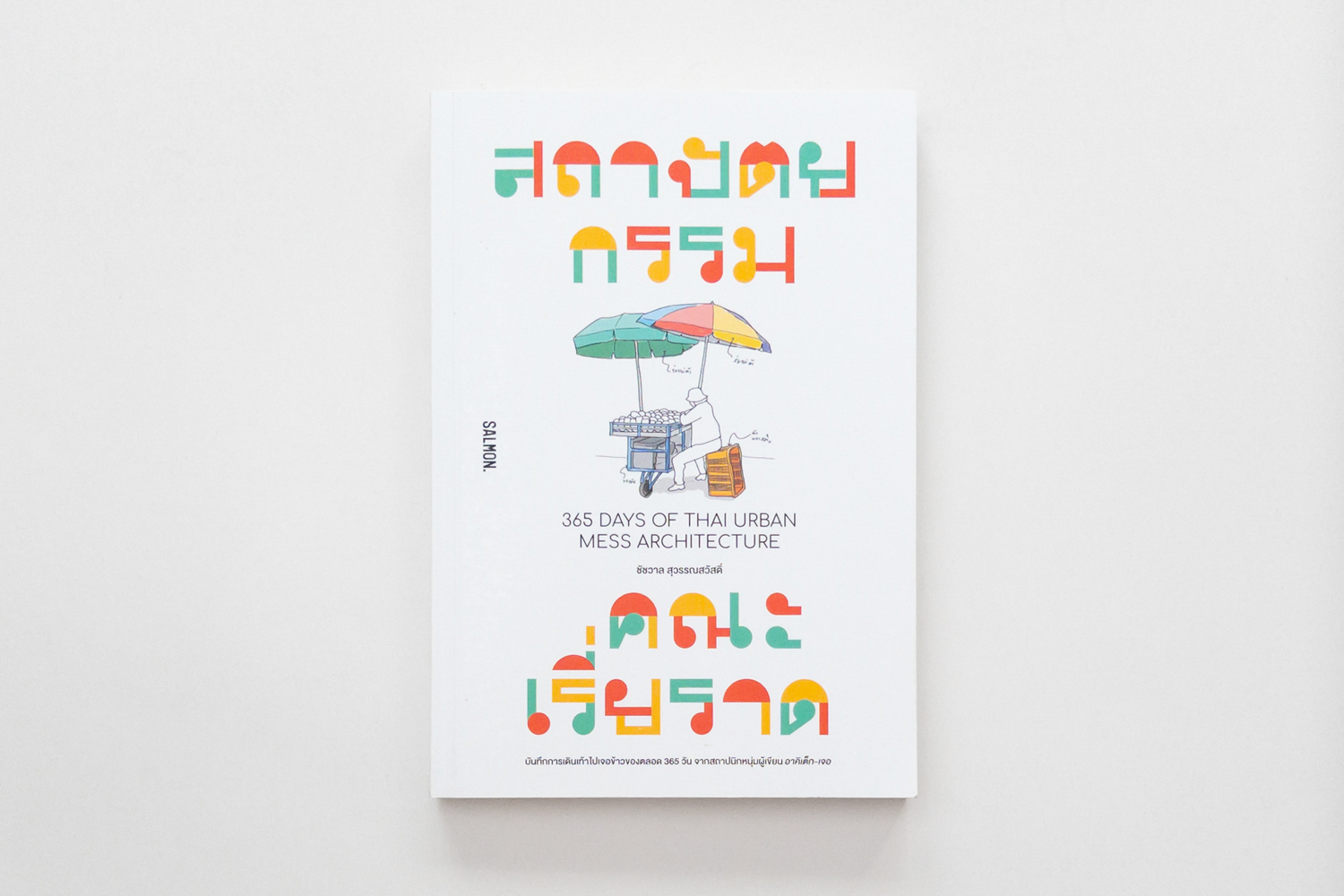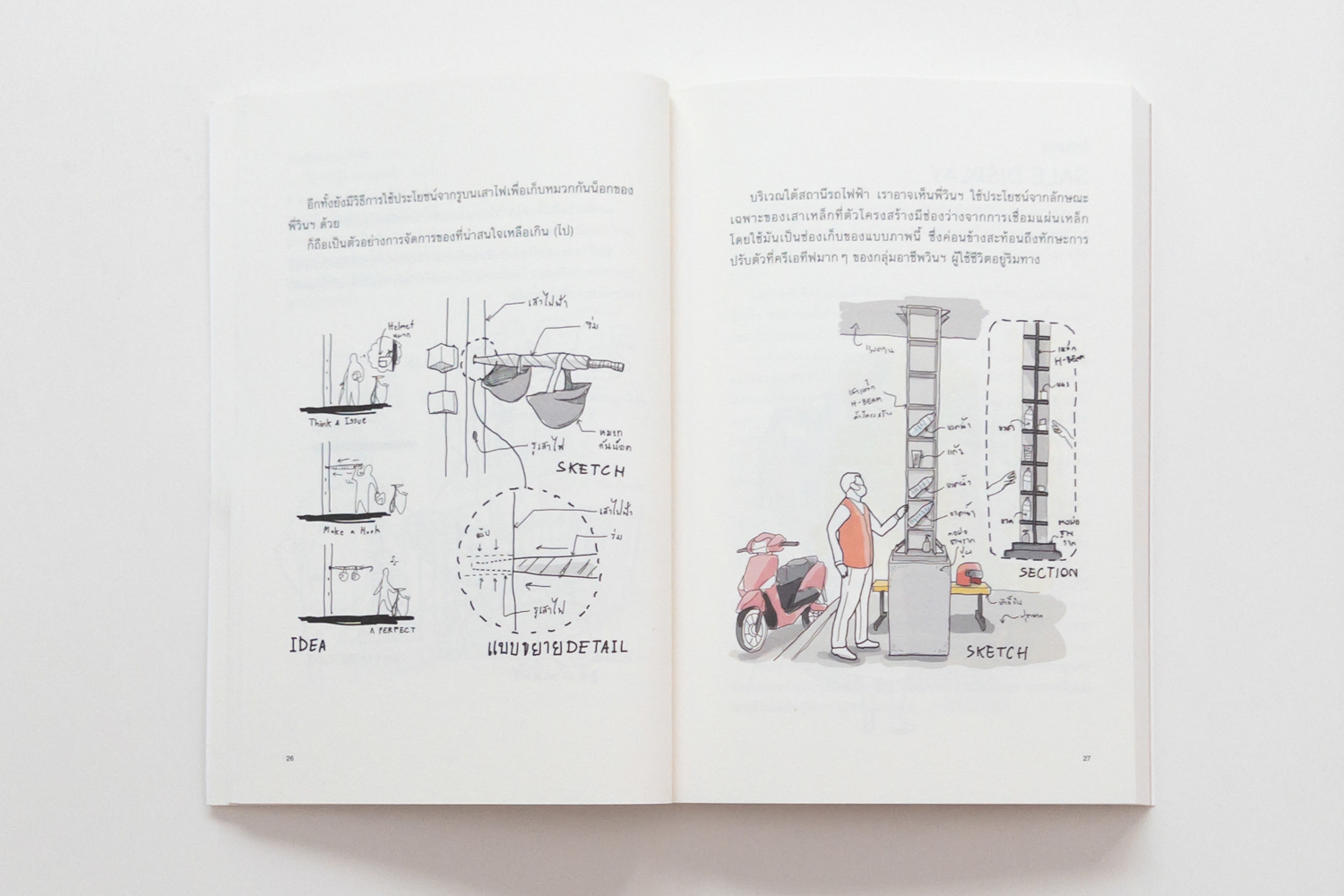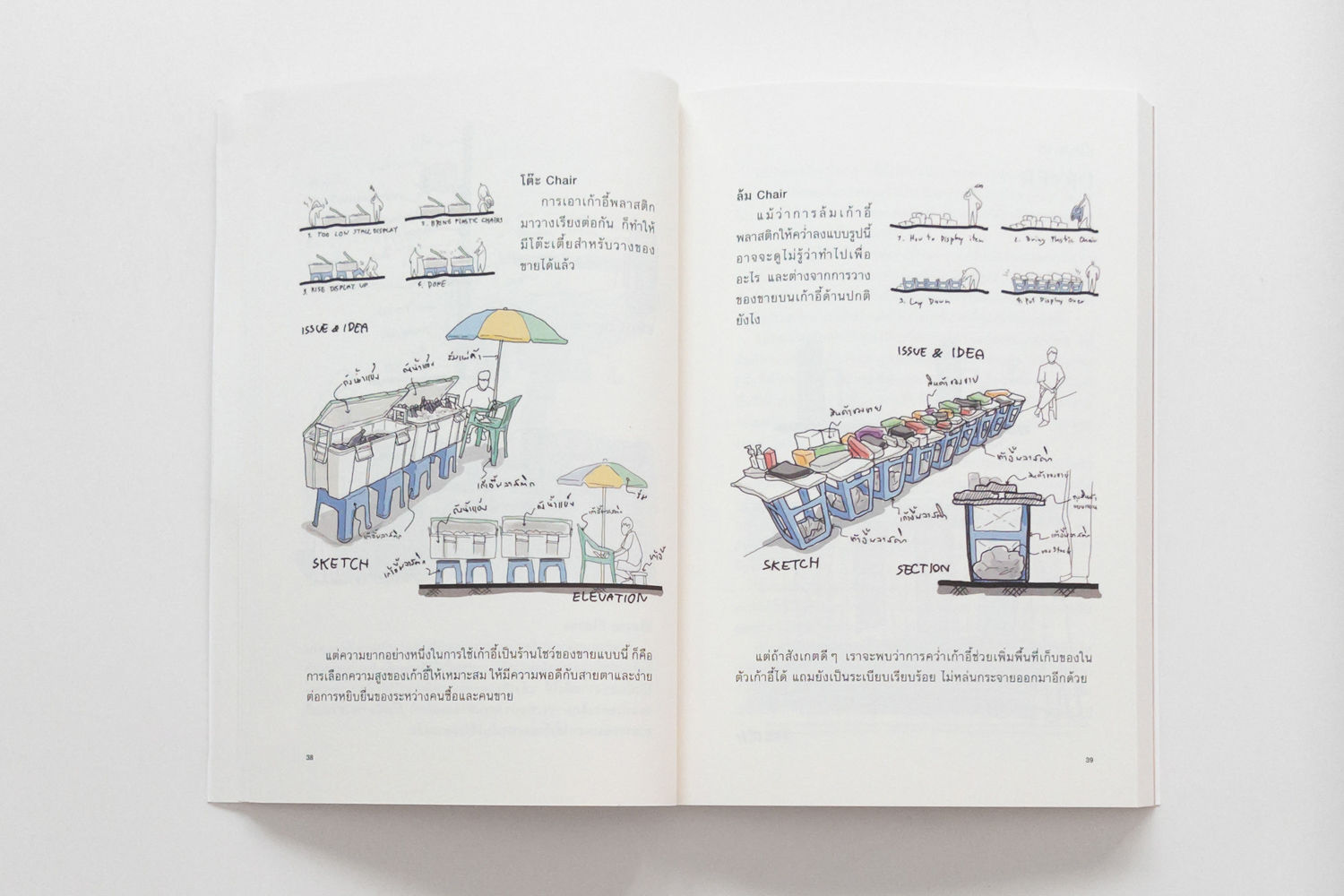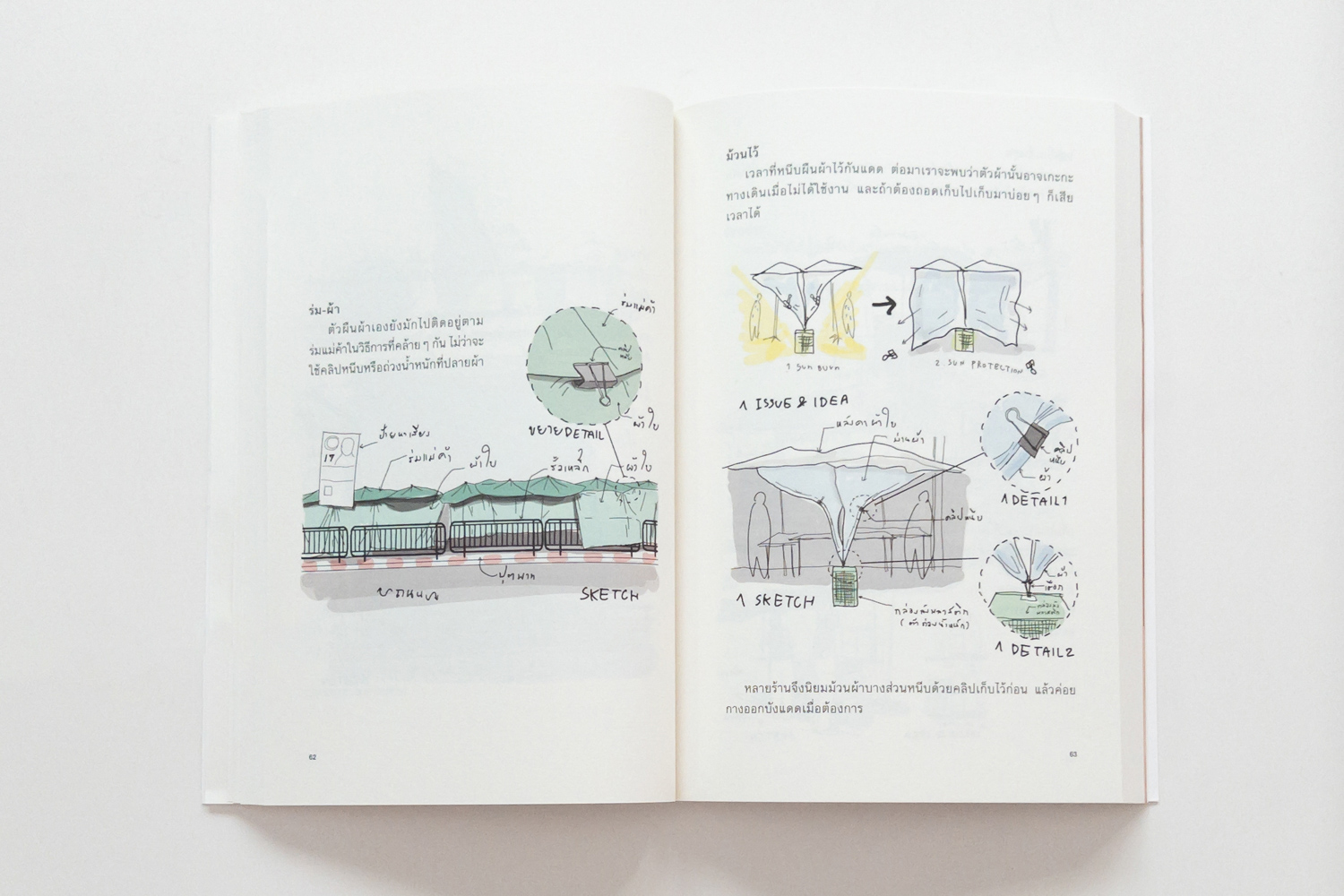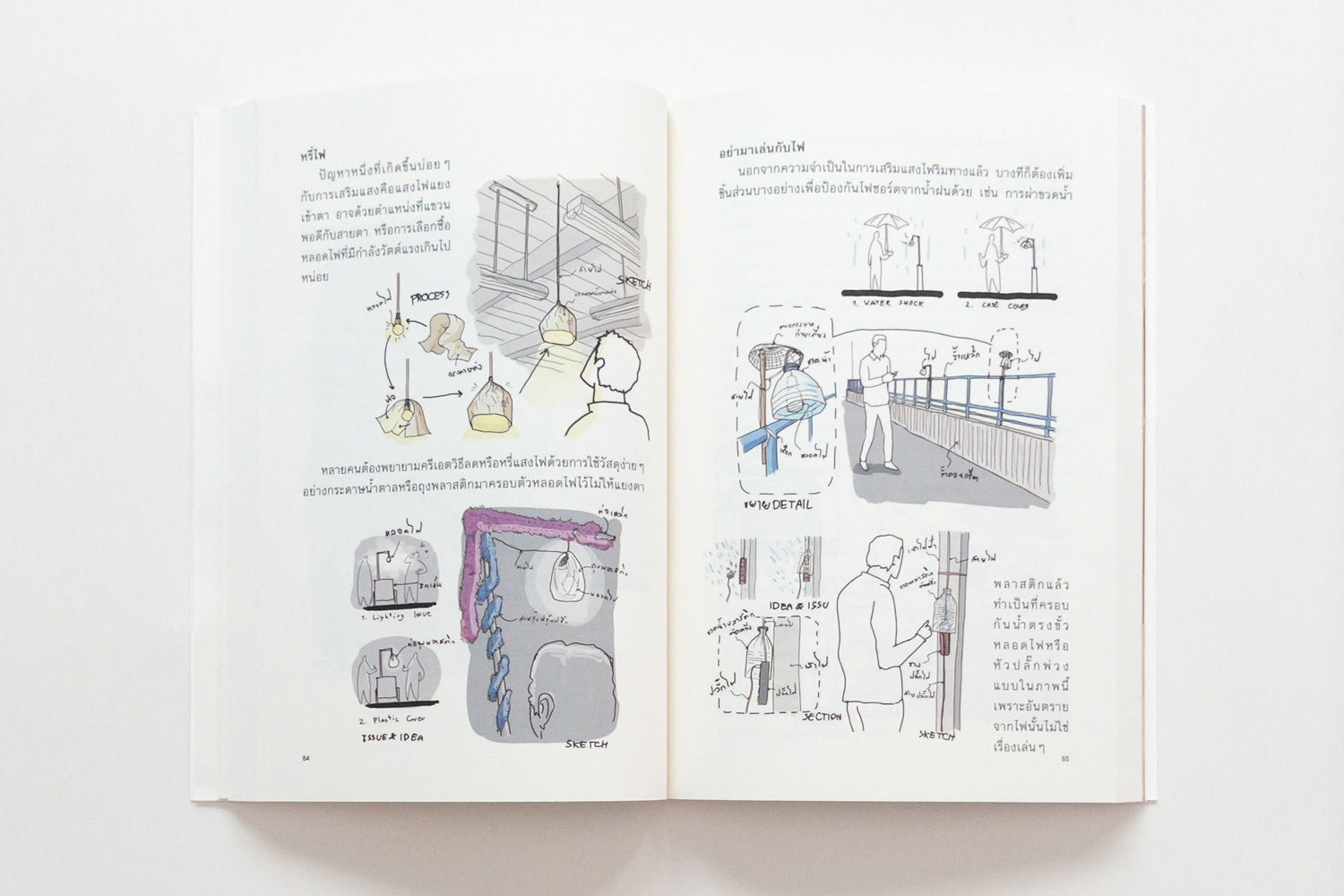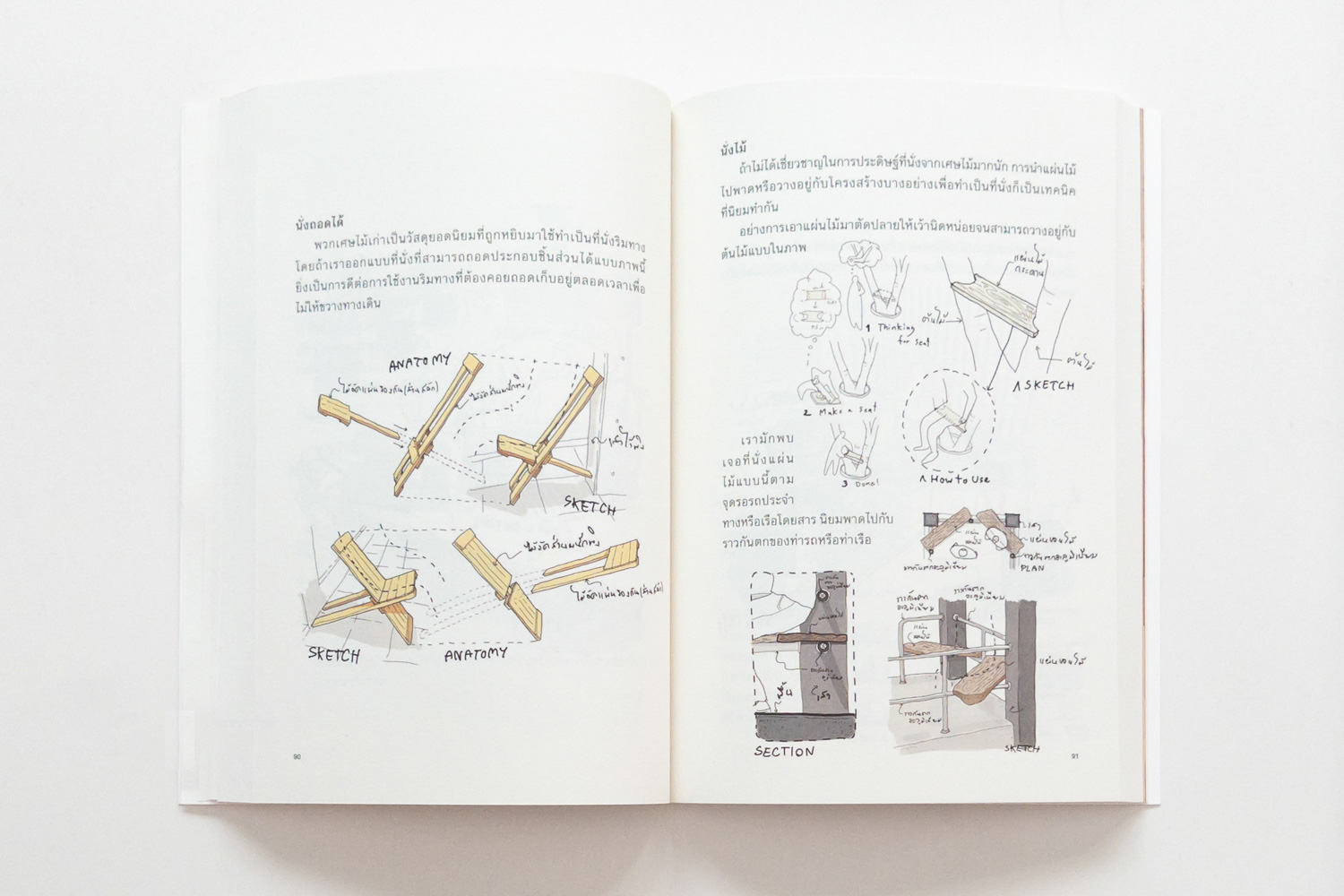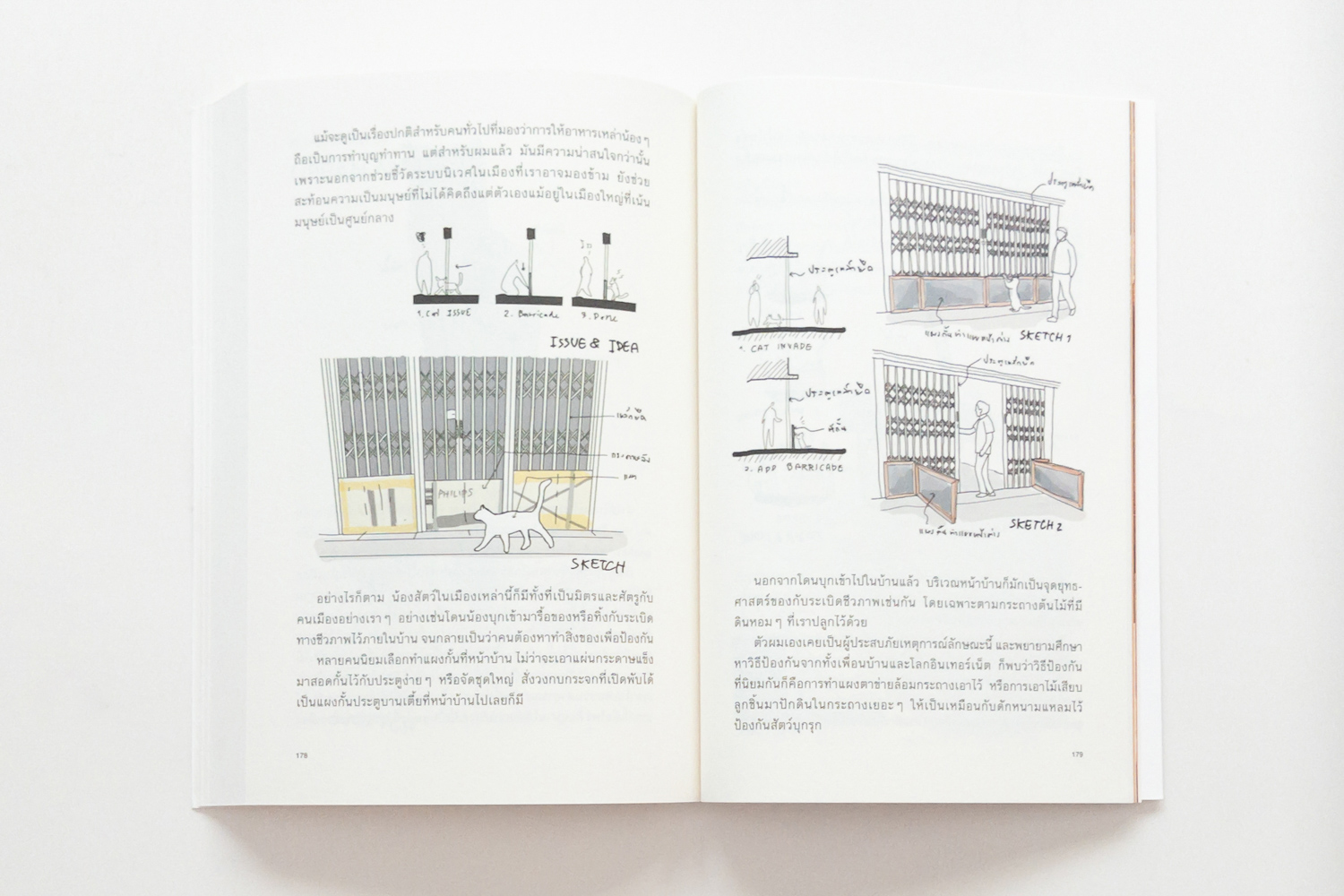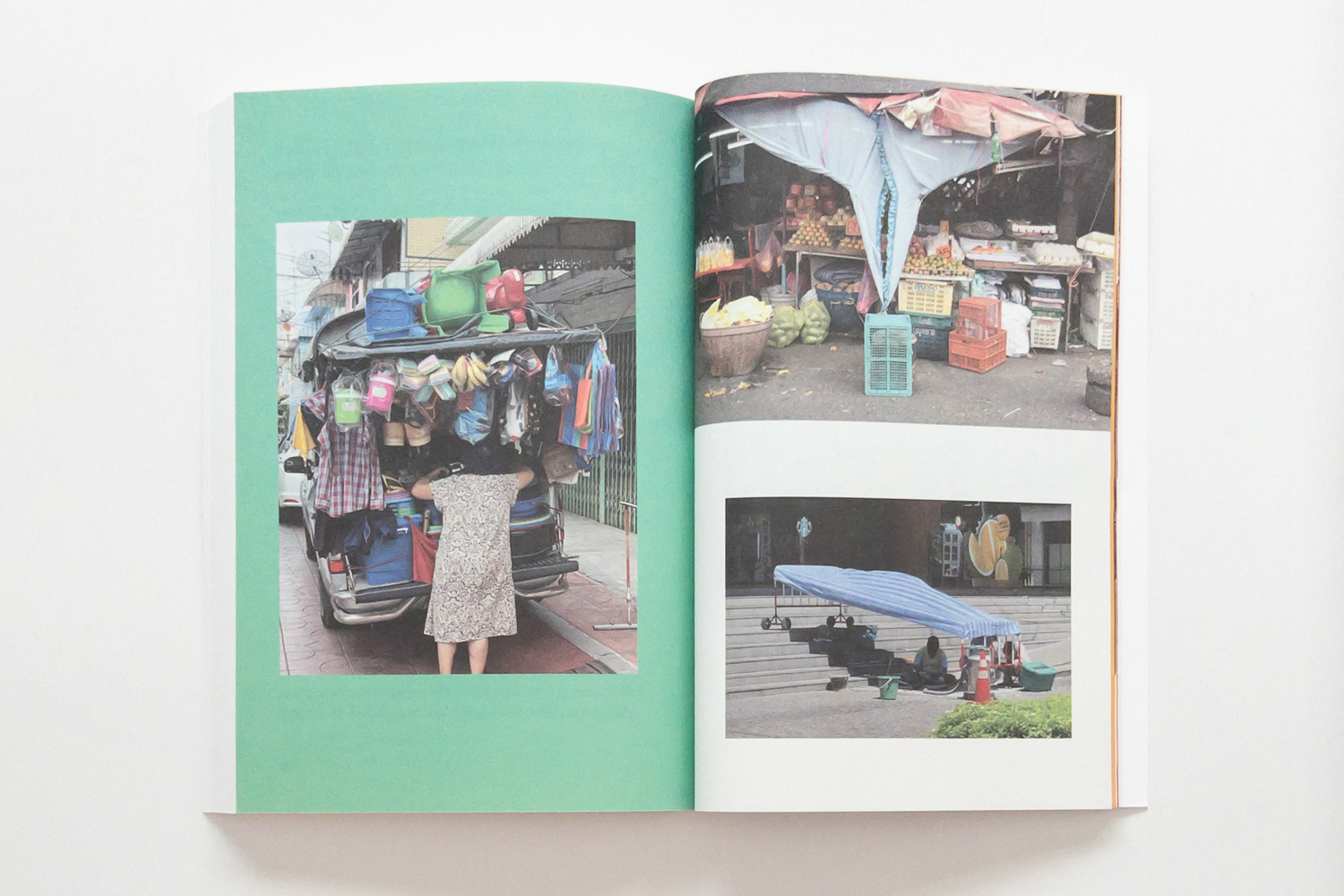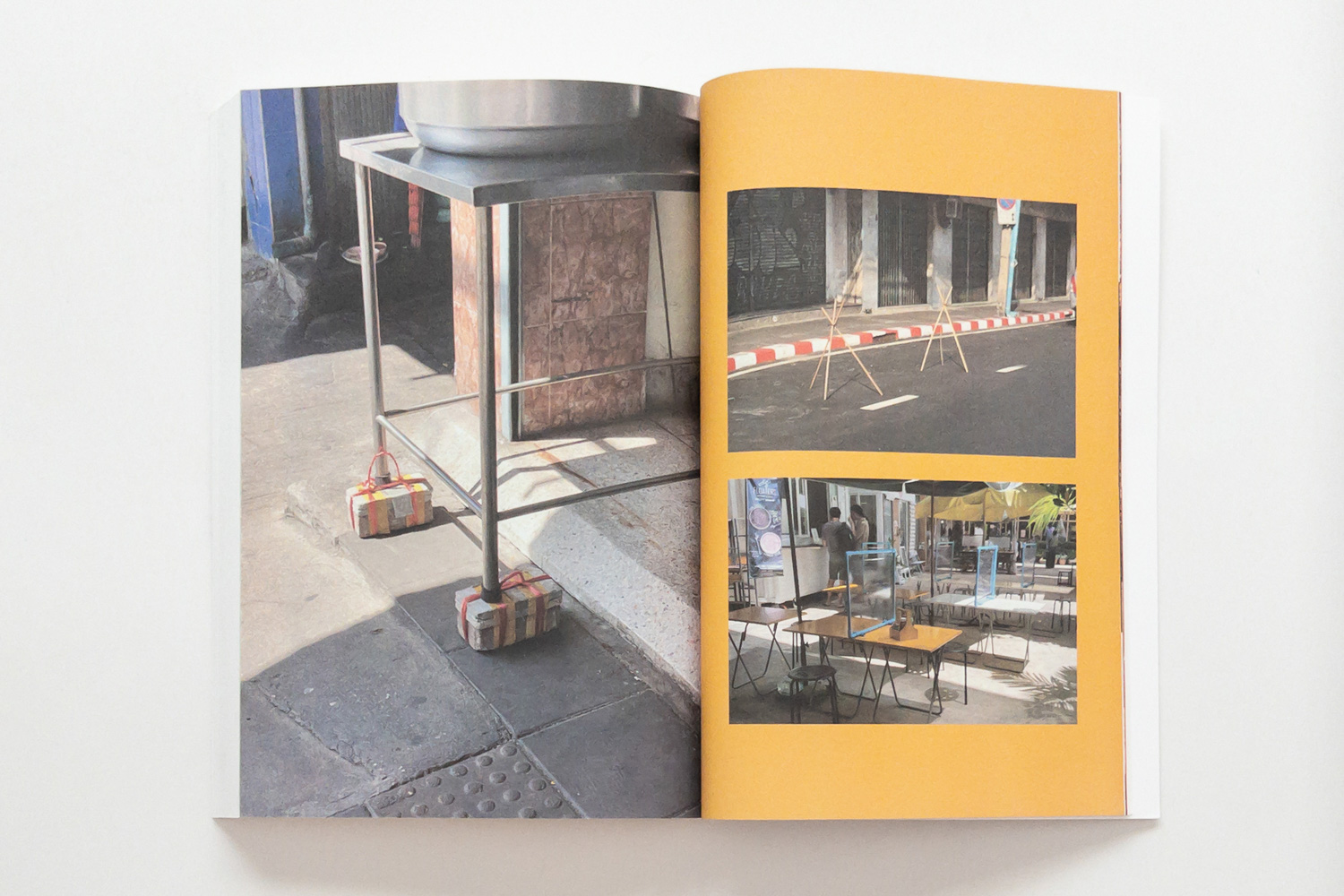A BOOK CREATED BY CHATCHAVAN SUWANSAWAT RECORDS AND DESCRIBES THE ‘ARCHITECTURE’ DESIGNED BY TOWNSFOLK IN BANGKOK THAT REPRESENT THE MESS OF UNEQUAL LIVING CONDITIONS
TEXT: NATHATAI TANGCHADAKORN
PHOTO: KETSIREE WONGWAN
(For Thai, press here)
365 DAYS OF THAI URBAN MESS ARCHITECTURE
Salmon Books, 2024
Chatchavan Suwansawat
5.7 x 8.3 inch
208 pages
Soft cover
ISBN 978-616-29-8609-3
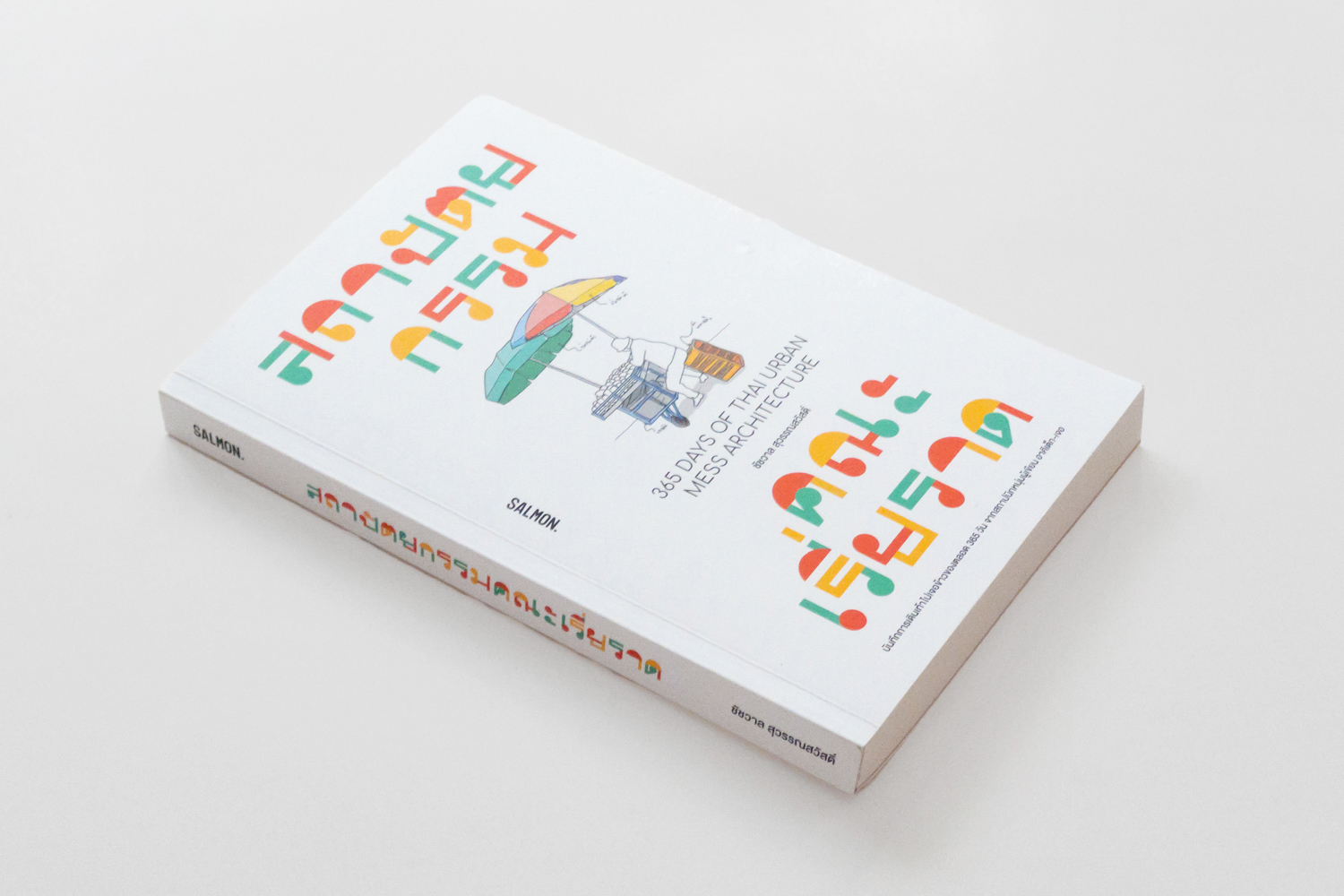
Recently, I have had the chance and the pleasure of immersing myself in several design books that artfully curate everyday objects, organizing them into thematic categories. These volumes captivate not only for their exploration of ‘design’ and ‘design methodologies’ but also for their ability to contextualize these designs within the very fabric of the cities they inhabit. A particularly intriguing example is ‘365 DAYS OF THAI URBAN MESS ARCHITECTURE,’ set against the vibrant backdrop of Bangkok, Thailand.
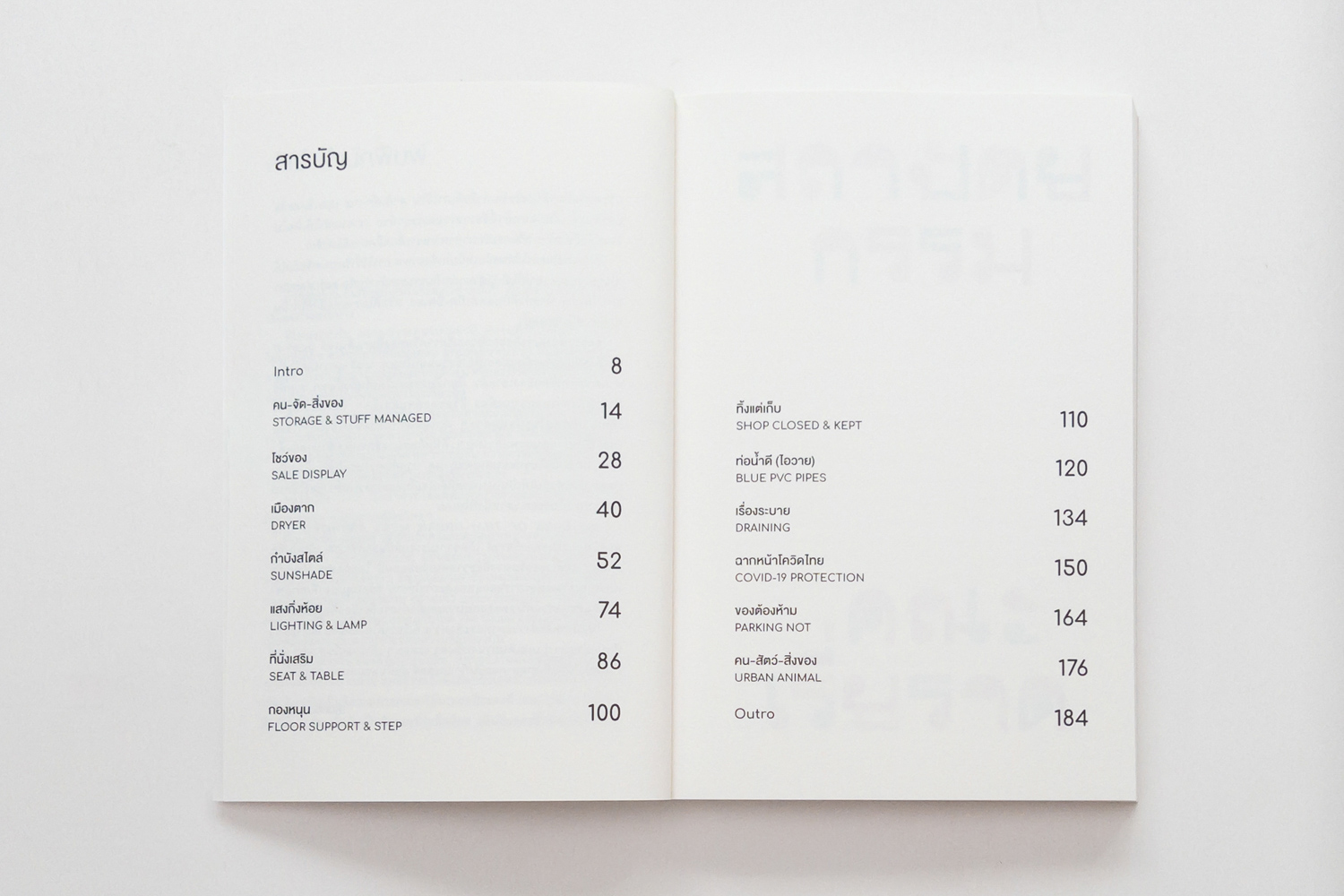
Penned by the insightful Chatchavan Suwansawat, author of the cleverly titled ‘Architect-Jer’ (a play on the Thai word ‘jer,’ meaning ‘find’ or ‘come across,’ and the word ‘architecture’), the book references ‘The Khana Ratsadorn Architecture (The People’s Party’s Architecture)’. Unlike traditional architectural tomes, Suwansawat’s book shifts the focus from grand edifices to quotidian objects crafted by ordinary users, presenting a kaleidoscopic view of urban life that is both chaotic and endearing. In the introduction, Suwansawat points out how, “In my view, the similarity between the works featured in ‘365 DAYS OF THAI URBAN MESS ARCHITECTURE’ and ‘The Khana Ratsadorn Architecture,’ despite their completely different appearances, is the societal neglect they suffer due to prejudice.” This insight lays bare a parallel: just as the stripped-down Thai architecture of a democratic era aimed to symbolize equality, today’s seemingly haphazardly placed objects challenge the idealized image of a pristine metropolis that people envision.

In addition to its name that bears obvious inspiration from ‘Khana Ratsadorn (People’s Party)’, ‘365 DAYS OF THAI URBAN MESS ARCHITECTURE,’ (its Thai name, the Architecture of Khana Ria Rard or the messy party) doesn’t have a specific theme. This volume merely contains a collection of objects that Chatchavan encountered over a 365-day period, which were later organized and framed. The book’s 13 chapter titles cleverly wordplay on phrases familiar to Thai people. For example, ‘คน-จัด-สิ่งของ’ (kon-jad-singkhong), translates directly to ‘people-organize-things,’ subtly echoing ‘kon-sud-singkhong’ (people-animal-things), a phrase often used in Thailand’s early childhood education to teach basic vocabulary. Another title, ‘กำบังสไตล์’ (Gam Bang Style), is a pun on the K-Pop hit ‘Gangnam Style’, while ‘ท่อน้ำดี (ไอวาย)’ (Tor Nam DIY) merges ‘Tor Nam Dee’ (water supply pipes) with ‘DIY’ (Do It Yourself), blending the meanings of both terms. With designs that capture unique local nuances not found in other countries, this book is distinctly regional. Meanwhile, its presentation in colored sketches makes the ideas it conveys both accessible and universal.
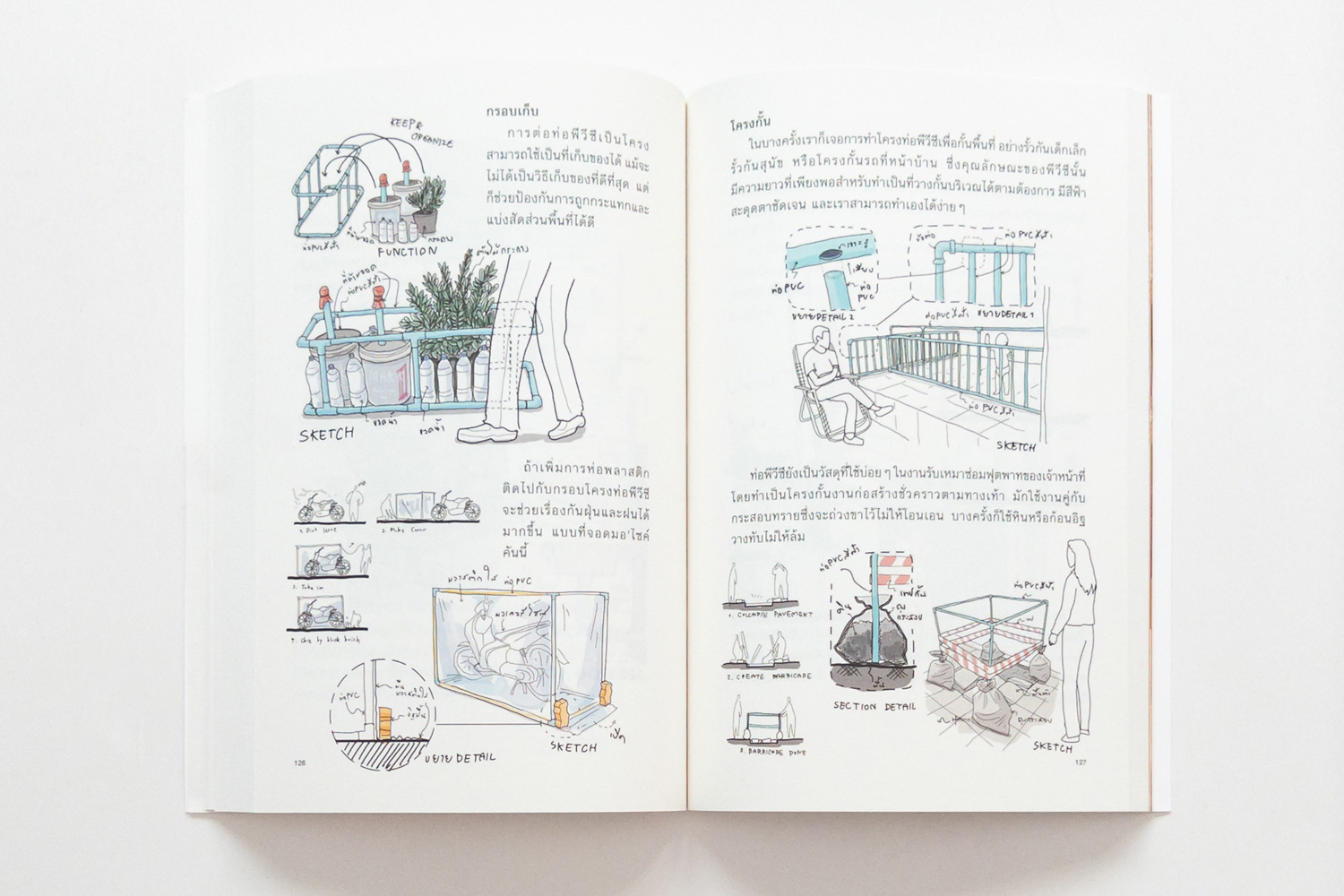
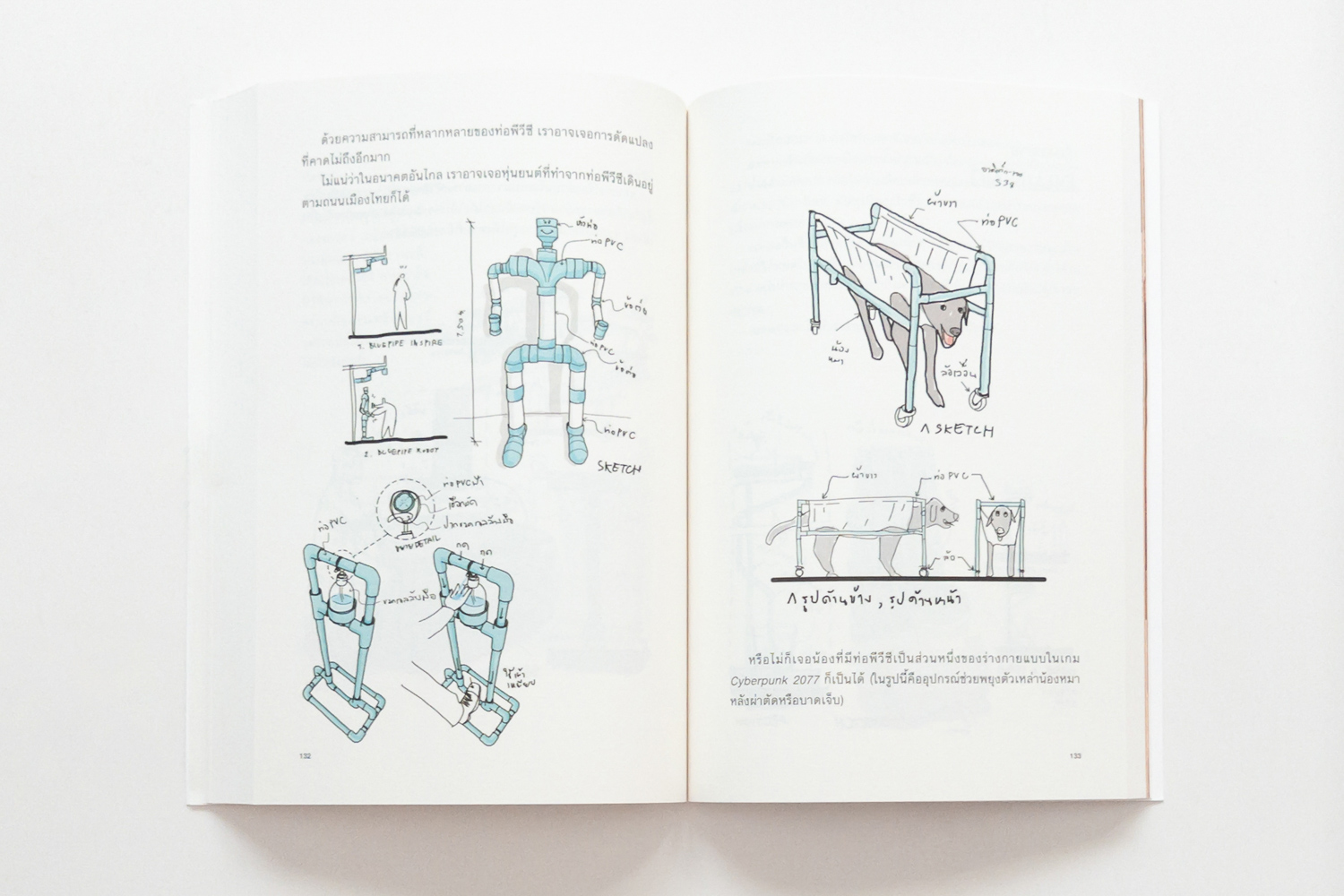
Personally, ‘365 DAYS OF THAI URBAN MESS ARCHITECTURE’ is enjoyable, yet not particularly entertaining to read. Some of the problems presented in this book cannot be solved through design alone. Many designers might progress through the pages, and find themselves inspired with ideas to tackle these issues, yet ultimately unable to resolve them effectively. For instance, in trying to solve the problems faced by street vendors, designers might come up with different designs imaginable while the core issue would be left unaddressed: the inadequate and poorly managed sidewalk space—a structural problem of urban planning above all else. Seen in this light, this book can feel like a tough pill to swallow for a lone designer seeking solutions through design.
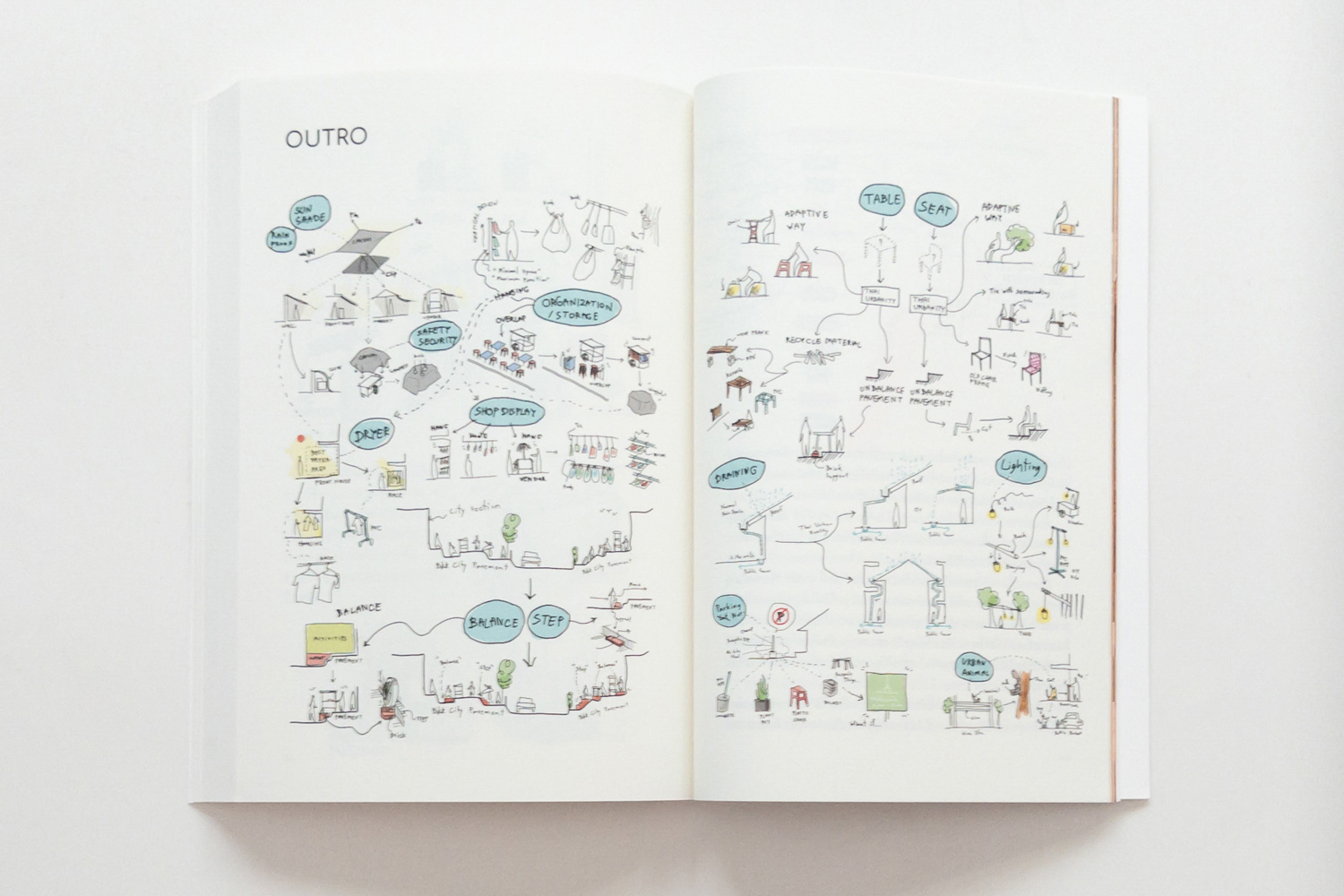
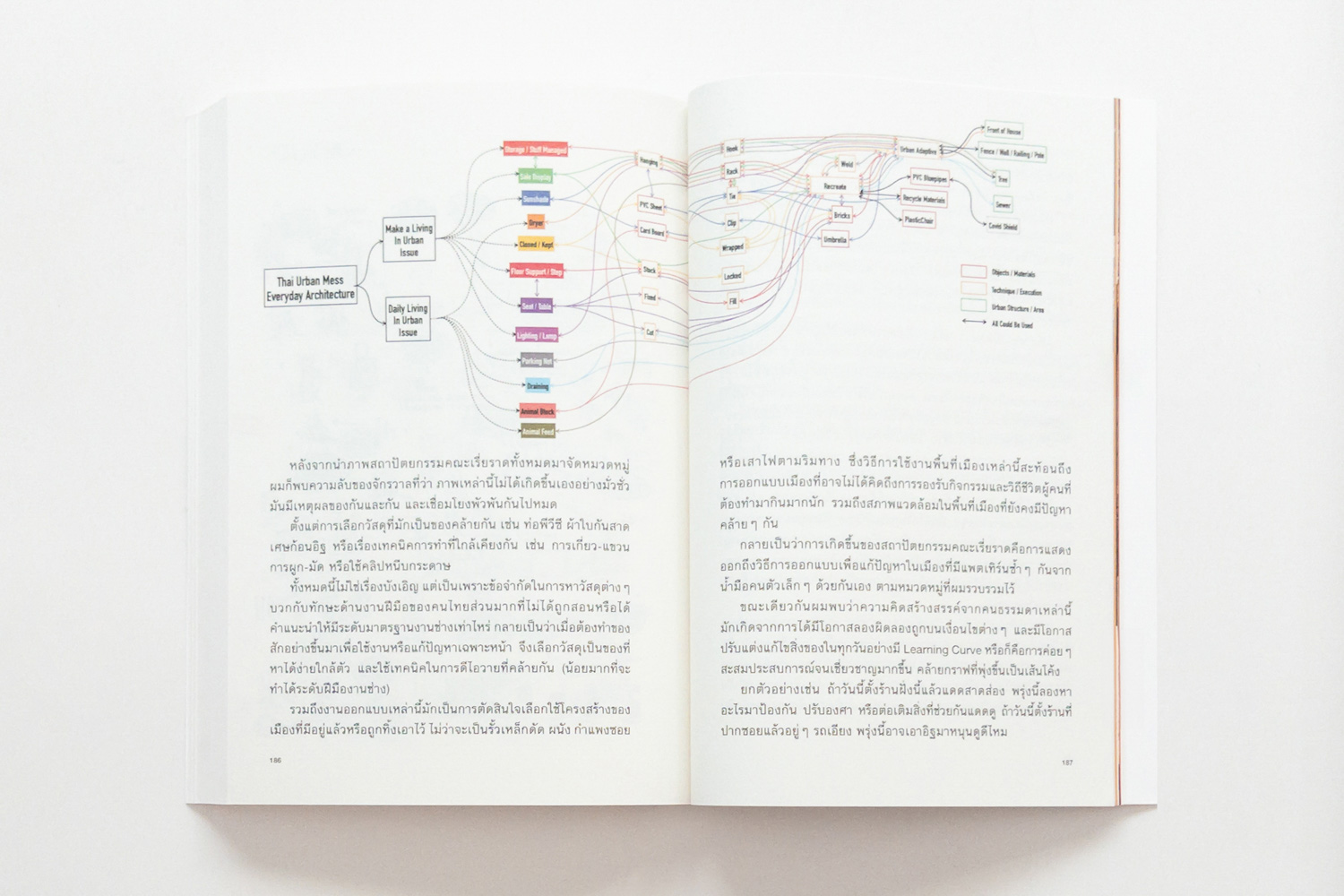
Nevertheless, when these problems are eventually eradicated from the city, this book will serve as an excellent repository of ideas, guiding us on what to create next. This might be Chatchavan’s intention with this straightforward presentation after all. During a time when we are still tirelessly continuing to design new things, this book will, at the very least, inform us of what’s waiting for us and what we can do in the meantime.
Where there’s a will, there’s a way.
acebook.com/viewtiful.chat
facebook.com/everydayarchitectdesignstudio
salmonbooks.net

